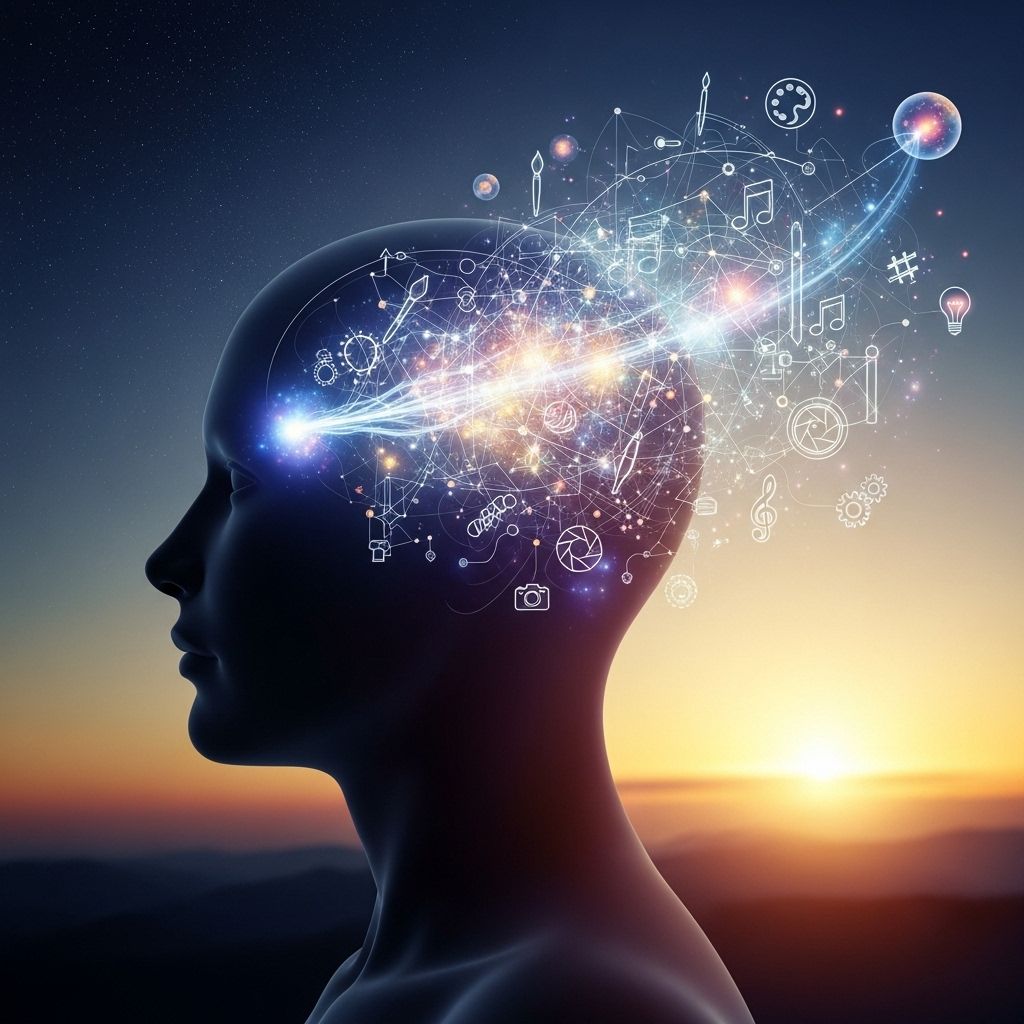Creative Visualization: Unlocking the Power of Mental Imagery in Art
Vivid mental scenes guide creativity, calm the mind, and deepen artistic expression.

Table of Contents
- What is Creative Visualization?
- Creative Visualization in Art
- Techniques and Exercises for Creative Visualization
- Psychological Benefits of Creative Visualization
- Frequently Asked Questions
What is Creative Visualization?
Creative visualization is a mindful practice that involves intentionally crafting vivid mental images, whether with eyes open or closed, to influence emotions and achieve positive psychological, physiological, and social outcomes. This technique is closely related to guided imagery and is often used in therapy to transform mental imagery for emotional healing and well-being.
Creative Visualization in Art
In the realm of art, creative visualization plays a crucial role in enhancing imagination and creativity. Artists use mental imagery to generate novel ideas, solve visual problems, and shape their artistic visions. By vividly imagining colors, textures, and compositions, artists can envision their work before embarking on the physical creation process. This approach allows for a richer exploration of artistic possibilities and can lead to more innovative and expressive works.
Visualizing Artistic Concepts
- Conceptual Development: Artists use creative visualization to develop and refine their artistic concepts, allowing them to explore different themes and styles before committing to physical media.
- Problem-Solving: By mentally visualizing artistic challenges, artists can rehearse and overcome technical difficulties, enhancing their skills and confidence.
- Emotional Expression: Creative visualization helps artists tap into their emotions, translating them into powerful and evocative works that resonate with audiences.
Techniques and Exercises for Creative Visualization
Practicing creative visualization involves several techniques and exercises that can be tailored to artistic purposes:
Meditative Visualization
- Setting Intentions: Begin by setting clear intentions about what you want to visualize, whether it’s a specific art piece or a creative project.
- Relaxation: Enter a meditative state to quiet the mind and focus your attention.
- Visualization Practice: Vividly imagine the intended outcome, engaging all senses to make the experience as immersive and realistic as possible.
- Emotional Engagement: Connect with the emotions evoked by the visualized scene, allowing these feelings to guide your artistic expression.
Guided Imagery for Artistic Expression
Guided imagery involves using sensory details to construct a mental environment that inspires creativity. This can include visual, auditory, tactile, and even olfactory elements to enrich the mental imagery experience. Trained practitioners can guide individuals through this process, helping them to tap into their creative potential.
Psychological Benefits of Creative Visualization
Beyond its artistic applications, creative visualization offers numerous psychological benefits:
- Reduced Anxiety and Stress: By imagining peaceful scenarios, individuals can calm their nervous system and shift focus away from negative thoughts.
- Enhanced Performance: Visualizing success in various tasks, such as public speaking or athletic performances, can boost confidence and motivation.
- Emotional Healing: Creative visualization can help transform distressing mental images into positive ones, fostering emotional balance and well-being.
Frequently Asked Questions
Q: How does creative visualization differ from regular mental imagery?
A: Creative visualization is more focused and result-oriented, aiming to achieve specific goals or outcomes through vivid mental imaging. Regular mental imagery is a broader term encompassing various forms of mental representation without a specific goal in mind.
Q: Can creative visualization be used for purposes other than art?
A: Yes, creative visualization is versatile and can be applied to various areas of life, including sports, public speaking, and personal motivation.
Q: How often should I practice creative visualization?
A: Regular practice, ideally daily, can enhance its effectiveness in improving both artistic creativity and personal well-being. Even short sessions can be beneficial if done consistently.
References
- https://www.mindful-worklife.com/blog/what-is-creative-visualization
- https://www.softmindindia.com/Blog/The-Psychology-of-Mental-Imagery-and-Visualization-Exploring-the-Science-Behind-the-Minds-Eye
- https://blog.mindvalley.com/creative-visualization/
- https://positivepsychology.com/visualization-techniques/
- https://www.berkeleywellbeing.com/visualization.html
- https://bradleyhook.com/does-visualization-work-discover-the-science-benefits-and-tools/
- https://fiveable.me/key-terms/introduction-creative-writing/visualization
- http://harimohanparuvu.blogspot.com/2013/10/creative-visualization-shakti-gawain.html
- https://www.scienceabbey.com/2018/10/24/power-of-the-mind-the-science-of-visualization-1/
Read full bio of medha deb












